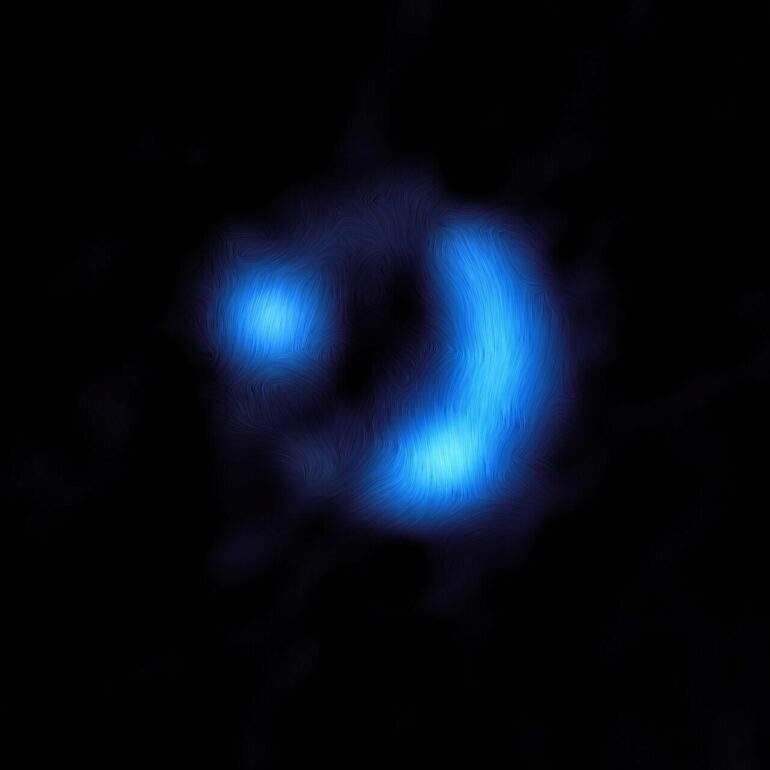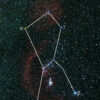Using the Atacama Large Millimeter/submillimeter Array (ALMA), astronomers have detected the magnetic field of a galaxy so far away that its light has taken more than 11 billion years to reach us: We see it as it was when the universe was just 2.5 billion years old. The result provides astronomers with vital clues about how the magnetic fields of galaxies like our own Milky Way came to be.
Lots of astronomical bodies in the universe, whether they are planets, stars or galaxies, have magnetic fields. “Many people might not be aware that our entire galaxy and other galaxies are laced with magnetic fields, spanning tens of thousands of light-years,” says James Geach, a professor of astrophysics at the University of Hertfordshire, UK, and lead author of the study published today in Nature.
“We actually know very little about how these fields form, despite their being quite fundamental to how galaxies evolve,” adds Enrique Lopez Rodriguez, a researcher at Stanford University, U.S., who also participated in the study. It is not clear how early in the lifetime of the universe, and how quickly magnetic fields in galaxies form because so far astronomers have only mapped magnetic fields in galaxies close to us.
Now, using ALMA, in which the European Southern Observatory (ESO) is a partner, Geach and his team have discovered a fully formed magnetic field in a distant galaxy, similar in structure to what is observed in nearby galaxies. The field is about 1,000 times weaker than Earth’s magnetic field, but extends over more than 16,000 light-years.
“This discovery gives us new clues as to how galactic-scale magnetic fields are formed,” explains Geach. Observing a fully developed magnetic field this early in the history of the universe indicates that magnetic fields spanning entire galaxies can form rapidly while young galaxies are still growing.
The team believes that intense star formation in the early universe could have played a role in accelerating the development of the fields. Moreover, these fields can in turn influence how later generations of stars will form. Co-author and ESO astronomer Rob Ivison says that the discovery opens up “a new window onto the inner workings of galaxies, because the magnetic fields are linked to the material that is forming new stars.”
To make this detection, the team searched for light emitted by dust grains in a distant galaxy, 9io9. Galaxies are packed full of dust grains, and when a magnetic field is present, the grains tend to align and the light they emit becomes polarized. This means that the light waves oscillate along a preferred direction rather than randomly. When ALMA detected and mapped a polarized signal coming from 9io9, the presence of a magnetic field in a very distant galaxy was confirmed for the first time.
“No other telescope could have achieved this,” says Geach. The hope is that with this and future observations of distant magnetic fields the mystery of how these fundamental galactic features form will begin to unravel.
More information:
James Geach, Polarized thermal emission from dust in a galaxy at redshift 2.6, Nature (2023). DOI: 10.1038/s41586-023-06346-4. www.nature.com/articles/s41586-023-06346-4
Citation:
Researchers confirm furthest ever detection of a galaxy’s magnetic field (2023, September 6)



